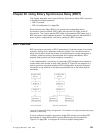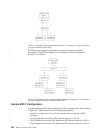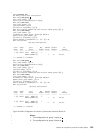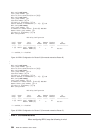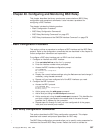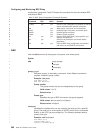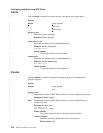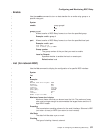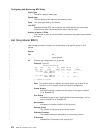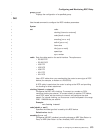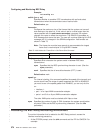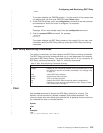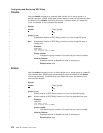Group number
The group number for the port. This number must be configured
previously using the add group command.
Interface number
The interface number of the router that designates the local port.
Primary or Secondary
Designates the port type, primary (P) or secondary (S).
Default value: S
Station Address Character
Specifies the character that the system displays for a secondary
port. You will be prompted for this only if you configure the local
port as a secondary.
Valid values: X'01' to X'FF'
Default value: None
Note: This value is used for display purposes only and identifies a
group of secondaries.
remote–port
Identifies the IP address of the port that is directly connected to the serial
line on the remote (peer) router. The following example shows the
configuration of a remote port as a secondary.
Example: add remote–port
Group number: [1]? 1
IP address of remote router:[0.0.0.0]? 128.185.121.97
(P)rimary or (S)econdary:[S]? s
Remote group number: [1]? 2
Station address character? cd
Group number
The group number for the port. This number must be configured
previously using the add group command.
IP address of remote router
Identifies the IP address of the interface that communicates with the
remote router.
Primary or Secondary
Designates the port type, primary (P) or secondary (S).
Remote group number
Specifies the group number for the remote port as it is defined at
the remote router.
Station Address Character
Specifies the character that the system displays for a secondary
port. You will be prompted for this only if you configure the local
port as a secondary.
Valid values: X'01' to X'FF'
Default value: None
Note: This value is used for display purposes only and identifies a
group of secondaries.
Configuring and Monitoring BSC Relay
Chapter 40. Configuring and Monitoring BSC Relay 569
|
|
|
|
|
|
|
|
|
|
|
|
|
|
|
|
|
|
|
|
|
|
|
|
|
|
|
|
|
|
|
|
|
|
|
|
|
|
|
|
|
|
|
|
|



